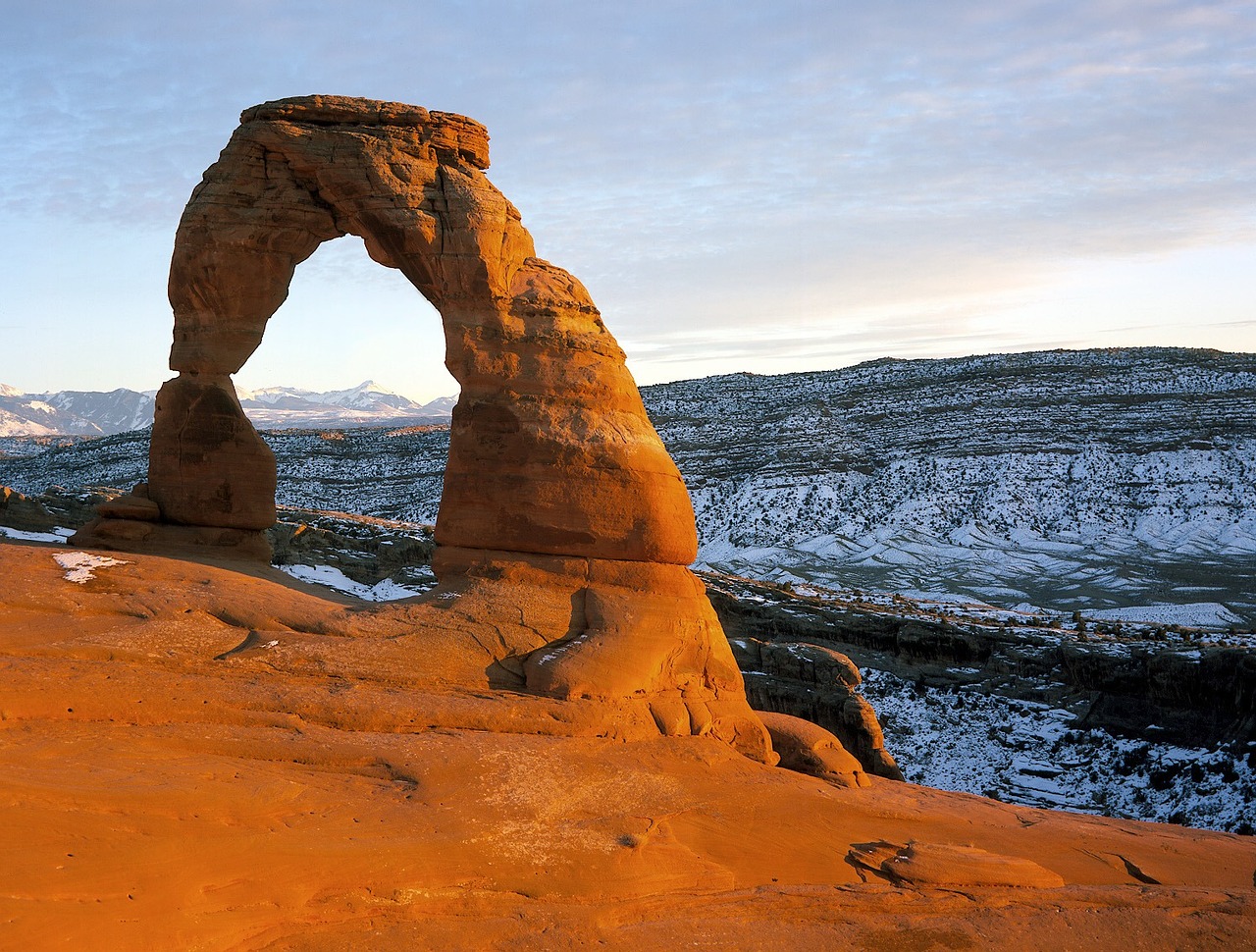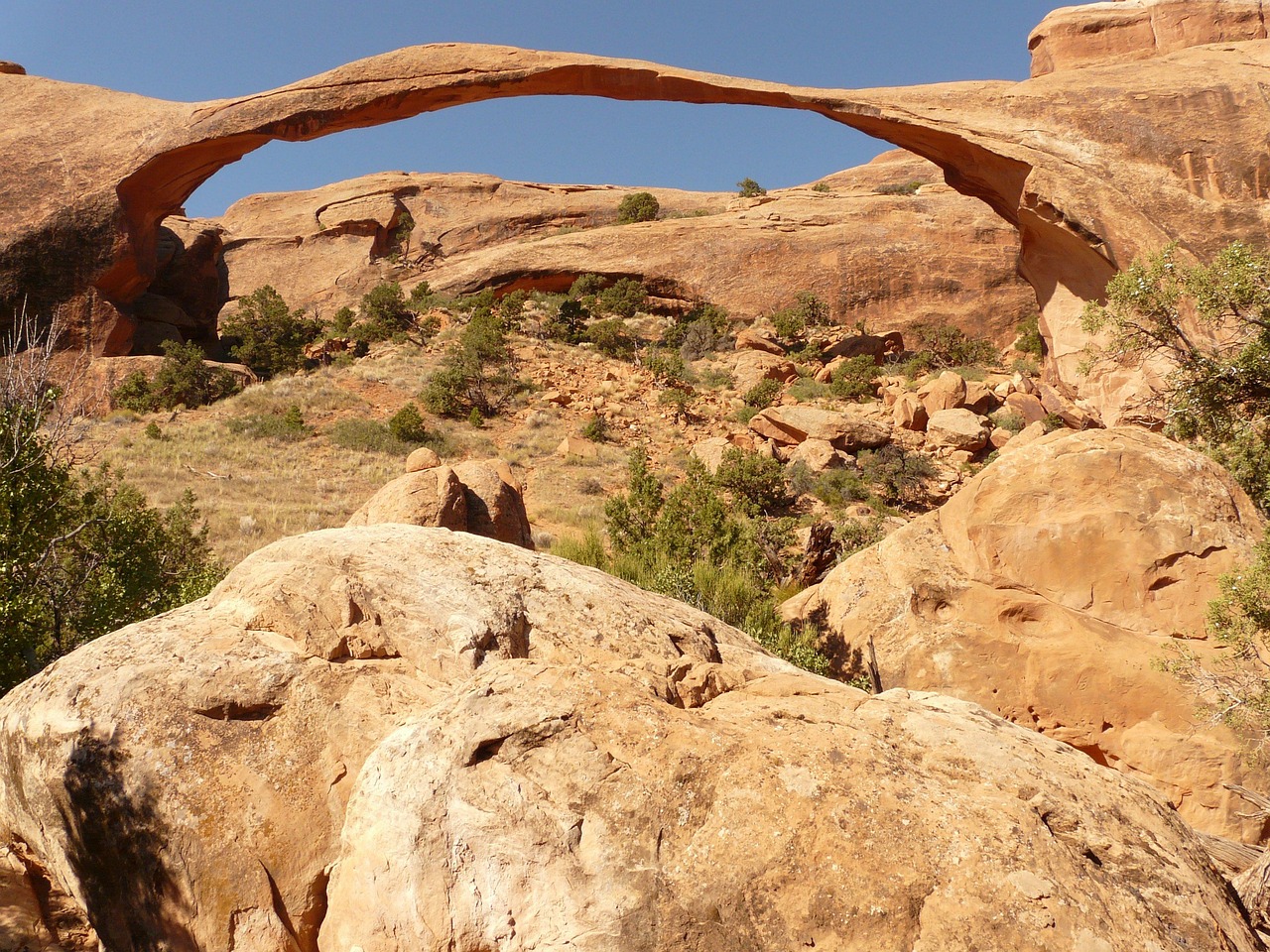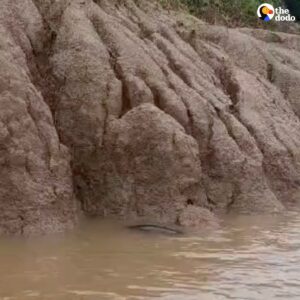By Travel Editorial Team
9 min read
Fast Facts
Location: Moab, Eastern Utah, USA
Established: November 12, 1971 (as a National Park)
Size: 76,519 acres (31,000 hectares)
Elevation: 4,085–5,653 feet (1,245–1,723 m)
Famous For: Natural sandstone arches, desert landscapes, hiking, photography
Closest Town: Moab, Utah
Why Go and What to Know
Arches National Park is nature’s sandstone gallery—home to over 2,000 natural rock arches, carved by time, wind, and water into surreal red formations. Located just outside Moab, it captures the essence of the American Southwest’s rugged beauty.
This otherworldly landscape has inspired painters, hikers, and geologists for generations. Every bend reveals shapes sculpted by erosion—bridges, fins, spires, and balanced rocks glowing orange in the desert sun.
Arches isn’t just a park—it’s a portal into Earth’s deep history, where millions of years of geologic change are frozen in stone.
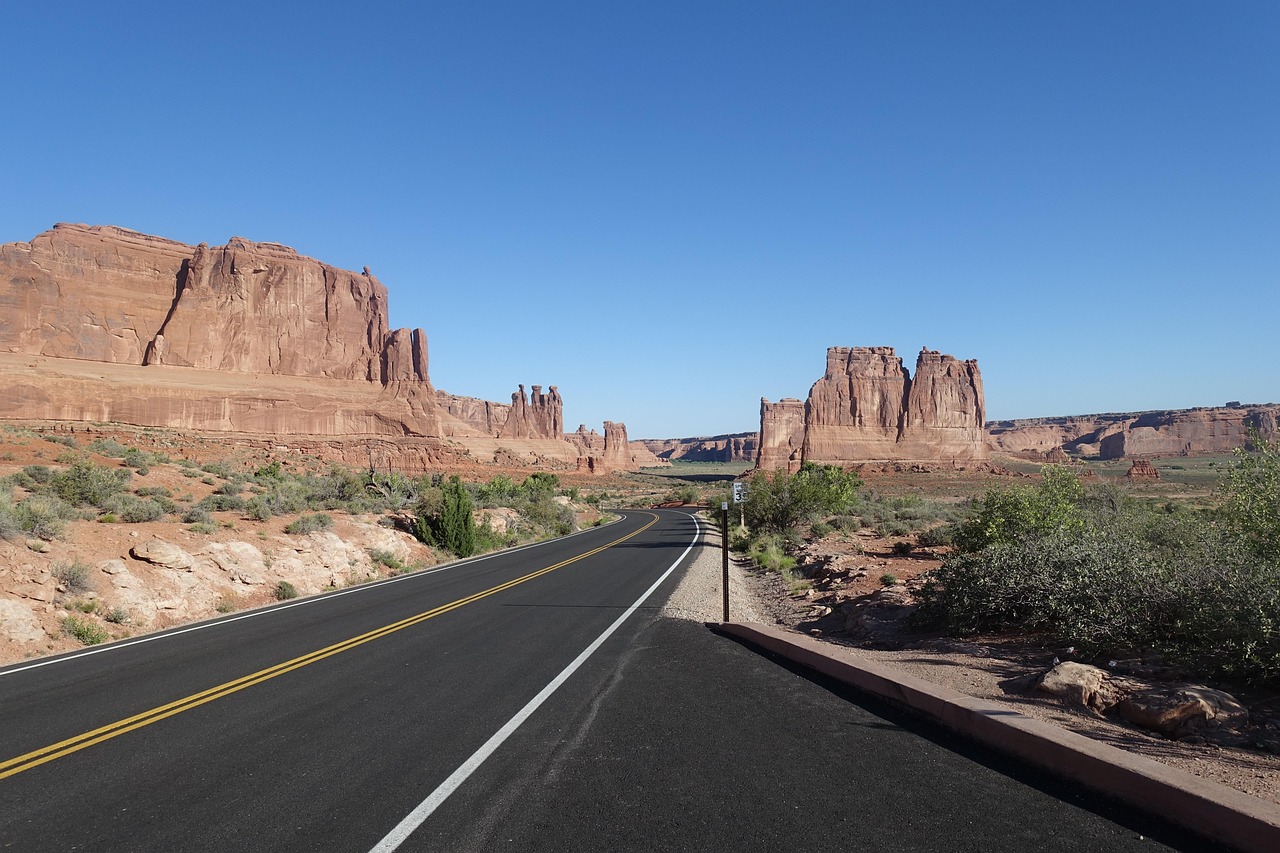
Top Attractions
1. Delicate Arch
The park’s most famous landmark—and Utah’s state symbol. The 3-mile round-trip Delicate Arch Trail leads to this freestanding wonder, perfectly framed against the La Sal Mountains. Best viewed at sunrise or sunset when the light paints the arch gold.
2. Landscape Arch
Stretching an incredible 306 feet, Landscape Arch is one of the longest natural rock spans in the world. The easy hike along the Devils Garden Trail reveals its fragile elegance.
3. Double Arch
Two massive arches joined at one end, forming a colossal window in the desert wall. Seen in films like Indiana Jones and the Last Crusade, it’s accessible via a short, level walk from the Windows Section.
4. The Windows Section
A must-see cluster of formations—North and South Windows, Turret Arch, and Double Arch—all within walking distance. It’s one of the most photographed spots in the park.
5. Balanced Rock
A 128-foot rock precariously perched on a narrow pedestal. Seen from the main road, it’s an icon of Arches’ delicate balance between stability and erosion.
6. Fiery Furnace
A maze of sandstone canyons and fins. Visitors must join a ranger-led tour or obtain a special permit—navigation without guidance can be tricky.
7. Devils Garden
At the park’s north end, this area features a network of trails leading to multiple arches, including Tunnel, Pine Tree, and Navajo Arch. The full loop (7.8 miles) is one of the park’s most rewarding hikes.
Seasonal Guide
| Season | Weather & Vibe | Highlights |
|---|---|---|
| Spring (Mar–May) | Mild, colorful blooms | Ideal hiking weather, fewer crowds |
| Summer (Jun–Aug) | Very hot (100°F+), dry | Early morning or evening visits best |
| Fall (Sep–Nov) | Comfortable, golden light | Great for photography and long hikes |
| Winter (Dec–Feb) | Cool, quiet | Snow dusting on red rock—rare beauty |
Best time to visit: Late March to early June, or September to October—temperatures are ideal and skies clear.
Plan Your Visit
Getting There
-
Nearest Airport: Canyonlands Field Airport (Moab, 15 min away); Grand Junction Regional Airport (~2 hrs)
-
By Car: Arches is 5 miles north of Moab via U.S. Highway 191.
Entrance Fee
-
$30 per vehicle (valid 7 days).
-
Timed Entry Reservation required from April through October (check NPS website).
Where to Stay
-
Inside the Park: No hotels; Devils Garden Campground (reservations needed).
-
In Moab: Wide range of options, from boutique hotels to desert glamping.
-
Sorrel River Ranch Resort – luxury with Colorado River views
-
Red Cliffs Lodge – rustic charm near the park entrance
-
Moab Springs Ranch – modern and eco-friendly
-
What to Bring
-
Water (at least 1 gallon per person daily)
-
Hat, sunscreen, hiking boots
-
Snacks and fuel—no services inside the park beyond the visitor center
Outdoor Adventures
-
Hiking: From short strolls to full-day treks—choose from over 20 marked trails.
-
Photography: Best light is dawn and dusk; try night shots of arches under the Milky Way.
-
Stargazing: Arches is a Certified International Dark Sky Park—bring a telescope or wide-angle lens.
-
Rock Climbing: Allowed in certain zones with permits. Respect all closures to protect fragile formations.
-
Scenic Drive: A 36-mile round-trip road passes most major viewpoints—plan 3–4 hours minimum.
Nearby Attractions
-
Canyonlands National Park – 30 miles southwest, with vast canyons and overlooks.
-
Dead Horse Point State Park – Stunning panoramic views, perfect for sunset.
-
Moab Town – Lively with cafés, local art, and adventure outfitters.
-
Colorado River Scenic Byway (Highway 128) – A gorgeous drive through red cliffs and river bends.
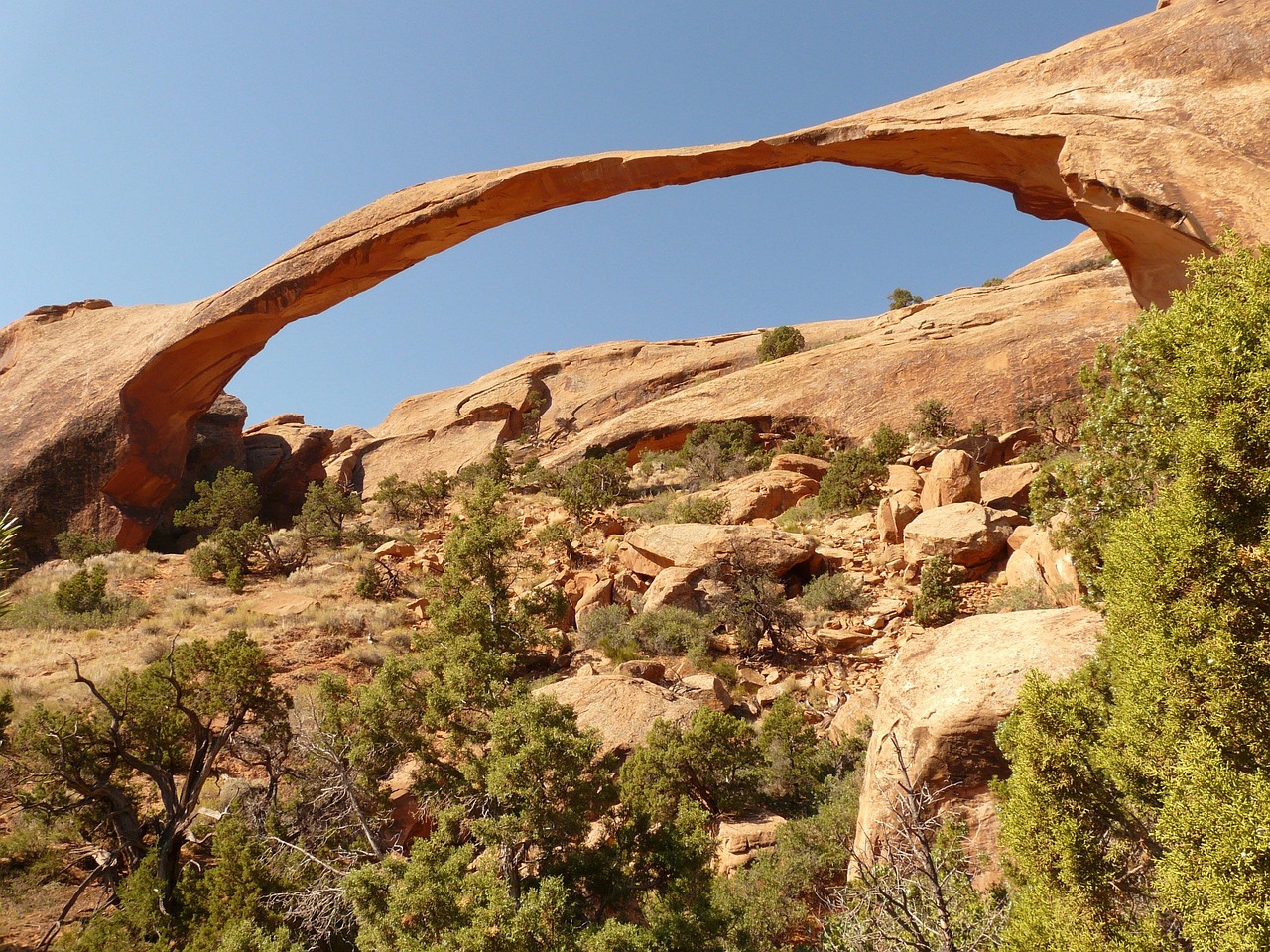
Why Arches Captivates
Arches National Park is a monument to time—each arch a sculpted moment millions of years in the making. In the silence of its canyons, you feel the scale of the Earth’s transformation.
Here, rock and light perform a daily ritual of creation and erosion, reminding visitors that beauty isn’t static—it’s the art of change itself. Standing beneath Delicate Arch at sunset, as the desert glows in gold and crimson, it’s impossible not to feel humbled by the vastness of nature.
